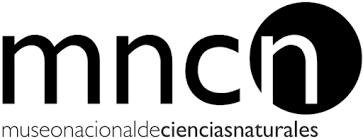Colección de Tejidos y ADN. Biobanco
-
Code
ADN -
Registration date
22/08/2007 -
Update date
10/06/2021 - Download the sheet
Description
The Tissues and DNA Collection is the largest national biobank of metazoan molecular biodiversity in Spain. It is estimated that it preserves more than 250,000 samples of tissues, nucleic acids and other biomolecules, belonging to more than 8,000 species of eukaryotes with a higher proportion of fauna, both vertebrates and invertebrates. These resources include from the most common species to those cataloged in risk of extinction. The highest percentage of preserved samples comes from research projects, internal and external to the museum, since the 1980s. It also preserves samples coming from the authorities in charge of the environment in the different Autonomous Communities and the central state administration, including judicial deposits related to smuggling or crimes against the protection of biodiversity; as well as from private entities such as zoos and non-governmental organizations (NGOs) for the protection of nature. Of the set of samples, 170,000 are cataloged and digitized. The different preservation methods used are ultrafreezing (-80º C), freezer-dryed and fluids (70% or 90% ethanol, or buffers such as DMSO or EDTA)Overall information
How to cite
The Tissues and DNA Collection. Biobank. National Museum of Natural Sciences, CSIC State Agency
Usage restrictions
The MNCN is committed to the spirit of the Convention on Biological Diversity (CBD) and its activities comply with the national and international legislation of the Nagoya Protocol on access to genetic resources and fair and equitable sharing of benefits arising from their utilization.
Tissues and DNA samples from the collection can be requested for analysis or re-analysis and research in various scientific disciplines, through the following email: mncn_coladn@mncn.csic.es
Since the entry into force of the Nagoya Protocol on Access to Genetic Resources and the Fair and Equitable Sharing of Benefits arising from their utilization, all users wishing to access genetic resources from wild taxa for utilization purposes must apply for authorization to the competent authority in each country of origin..
- Loans are considered personal and are not transferable by the borrower.
- All loaned material must be stored in proper conditions.
- The MNCN loaned samples, their voucher number and acronym (MNCN-ADN) must be cited in any resulting publications and in Genbank, or in any other molecular base.
- A copy (PDF) of the publication and the corresponding Genbank (or any other molecular base) accession number must be remitted to the MNCN as evidence that the analysis has been completed.
- In the event of description of new taxa, all type material will be returned except for paratype material that was previously agreed upon.
- After concluded the work, all excess tissue and/or excess DNA extracts must be returned carefully packaged and labelled, even if the results are negative.
- Borrowers must include a statement describing the molecular methods utilized, the extraction date, and the preservation method used. These extracts will be housed in the MNCN Tissue and DNA Collection.
- If for some reason the loaned samples were not used for the project they were requested for, they should be properly packaged and returned to the MNCN.
For aditional information you can visit
https://www.mncn.csic.es/es/colecciones/normativa
Common names
Eukaryotes with a higher proportion of fauna, both vertebrates and invertebrates.
Geospatial coverage
Worldwide.
Types of datasets
Organismos preservados, no vivos (herbarios, colecciones de animales y afines).
Digitalization
162.418
8300
65
No
Map of Specimens
Related Resources
Publications
- https://scholar.google.es/citations?user=83s6SEoAAAAJ&hl=es

